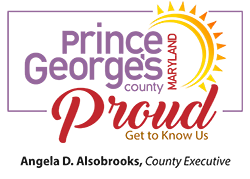
Resource Recovery Master Plan
The Prince George's County DRAFT Resource Recovery Master Plan
The Prince George’s County Department of the Environment (DoE) has released its draft Resource Recovery Master Plan (RRMP) for public review and written comment to help plan the long-term strategy for the County-managed waste and recycling streams. The County requested the Maryland Environmental Service (MES), in consultation with DoE to assist in the preparation of the draft document.
The RRMP is the continuation of the planning process begun by Prince George’s County in April 2018 when the County published its Zero Waste Initiatives. Specifically, the RRMP outlines policies, programs, and services that can reduce the quantity of waste generated, and/or divert waste away from landfill disposal toward reuse, recycling, and composting opportunities. These opportunities are identified in the Plan.
Prince George’s County generates approximately 1.6 million tons of waste annually, including - municipal solid waste or MSW (trash and garbage consisting of everyday items discarded by the public); construction and demolition debris; controlled hazardous waste; and sewage. Through the Department of the Environment, the County directly manages approximately 422,000 tons of waste or 25% of the total. This volume includes the 300,000 +/- tons of MSW disposed of at the Brown Station Road Sanitary Landfill (Landfill), 72,000 tons of recyclables processed at the Materials Recycling Facility, and 50,000 tons of yard trim and food scraps composted at the Western Branch Organics Composting Facility.
To divert material away from the landfill, the County first needed to understand what materials were currently being disposed at the County-owned and operated Brown Station Road Sanitary Landfill. In 2014-15, the DoE conducted a Waste Characterization Study (WCS) of the Landfill to determine the types and amount of MSW that may be recycled or diverted to other uses. The WCS determined of the 304,000 tons placed in the landfill annually, approximately 234,000 tons can be composed, recycled or diverted. This volume represents the County’s resource recovery opportunities. In addition, the WCS also sorted recyclable, compostable, divertible, and other waste by (a) specific type, (b) where applicable, by commodity value, and (c) source (residential, commercial, schools). The type and value of the recoverable materials, together with the material sources, lead to varying alternatives for resource recovery. Recommendations for doing so are available here. At the same time, the County needs to continue its source reduction efforts and plan for disposal of non-recyclable, non-divertible waste beyond 2026.
The goals of this RRMP are:
- Increase Recycling – Value and Volume
- Increase Food Waste Diversion
- Increase Reuse of Divertible Materials
- Increase Source Reduction
- Efficiently and Effectively Manage Waste Disposal
A complete copy of the draft is available here. For more information, call (301) 883-5952.
